5 Ways Food Can Improve Efficiency at Work
in Corporate Health & Wellness, Employee Engagement, Motivation, Productivity, Team/by Darren BradyIs Team Conflict a Good Thing or a Bad Thing?
in Conflict Management, Culture Change, Team/by Darren BradyTeamwork is a difficult thing to manage in today’s workforce. Employees, especially millennials newly entering the workforce, are looking for satisfying jobs where they will be able to have their say and see where their efforts are bearing fruit. While this isn’t a bad quality, it can be challenging when working with teams, as there will always be differences in opinions about how things should be.
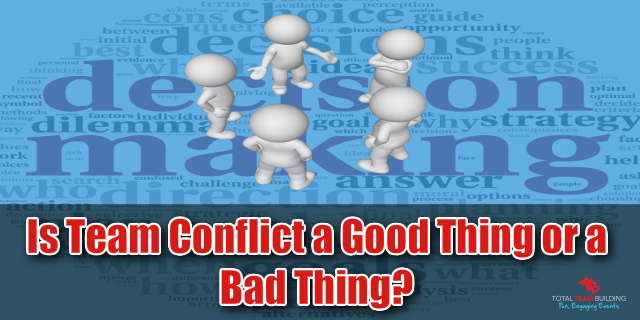
Is it okay to have conflict among team members? If it is, what does good conflict actually look like in the workplace? These are the issues I’m going to be addressing in this article.
Is Conflict a Good Thing or a Bad Thing?
Conflict, when done in the right way, can be the best and most productive thing for your team. Positive conflict happens when ideas are discussed in a way that does not discourage people from speaking or debating. Only when you have established a culture of trust can employees discuss anything to do with the project without fear of being abused or shut out for an idea that may not make much sense.
Additionally, employees need to be able to resolve any issues they have with each other at work. This can only happen through positive conflict situations, where employees feel okay about confronting each other in regards to certain situations at work.
Although positive conflict may still feel uncomfortable, positive conflict actually resolves the issue and allows teams to move on to something more productive. It results in a happier and healthier workplace where things don’t fester over time in people’s minds, and instead are brought into the open and dealt with quickly.
How to Identify Healthy Team Conflict
There are a few things you need to ask if you want to identify which conflict in a team is healthy and which is not:
- Is the conflict solving an issue?
A conflict that isn’t based on a real issue can be unproductive and harmful to your team. Make sure healthy conflict surrounds real issues that will make a difference to the team in one way or another. The goal should be based on producing the best possible solution in the shortest amount of time.
- Are people respecting each other?
If your employees are not acting respectfully towards each other, then you as the leader need to step in and control the situation. There should be a respectful discussion going on that allows everyone to speak their mind without fear of reproach or bullying. Creating a culture of trust helps with this.
- Are new ideas being presented and debated?
Sometimes conflict involves the same issues being presented over and over again. This is not a healthy way to debate, because nothing new is getting solved or changed by the discussion. Instead, once something is solved and debated it should be put to the side so that new issues can be discussed instead.
- How competitive are employees with each other?
Top performers tend to be more competitive towards each other than the average worker. To help control this and turn it into something good, let the employees compete with each other in certain areas, as long as they are working towards a team goal and making progress.
- Is there a set of rules being followed for the discussion?
Healthy conflict should follow a set of rules of engagement that will guide employees on how to treat each other during a discussion. Having this set of rules will make everything go more smoothly and help employees to know how they should or shouldn’t approach a discussion. Simply put no interpersonal politics and personal attacks. Conflict should be limited to the ideas and concepts with the ultimate goal of producing the best possible solution for the team.
- Do employees agree at the end of the conflict?
While your employees may never see eye-to-eye exactly, they should be able to come to a resolution and make a decision at the end of the conflict session.
Promoting Useful Conflict within a Team
As the team leader, you can help to promote healthy conflict within your team. Creating the right company culture that focuses on trust, adaptability, flexible mindsets, openness, and acceptance of new ideas will help your employees embrace positive conflict.
Remember that conflict will never be particularly pleasant for anyone, because it does involve two or more people with differing opinions, but if it’s done in the right way it can engage the team in a positive way.
Conclusion
Conflict doesn’t have a good reputation in the business world, but it’s something that shouldn’t be avoided. Instead, usher in positive conflict and great discussions with your employees to help create productivity and useful changes in your workplace.
About Total Team Building
Total Team Building specialise in teams…we facilitate fun engaging experiential team building activities designed to enhance team culture, leadership, communication and collaboration. For more information about how Total Team Building can help you and your team contact us today.
LINK SOURCES
No Assholes On The Team
in Culture Change, Leadership, Team/by Darren BradyThe Perth Scorchers are so far the most successful team in BBL history, having won three championships and coming runners-up twice in its 7-year history. The coach of the scorchers is nonother than former Australian cricketer Justin Langer who played 105 Test matches for Australia between 1993 and 2007, scoring 7696 runs and 23 centuries. Having been a key player in great Australian teams captained by Steve Waugh and Ricky Ponting, Justin knows what it takes for a team to be successful.
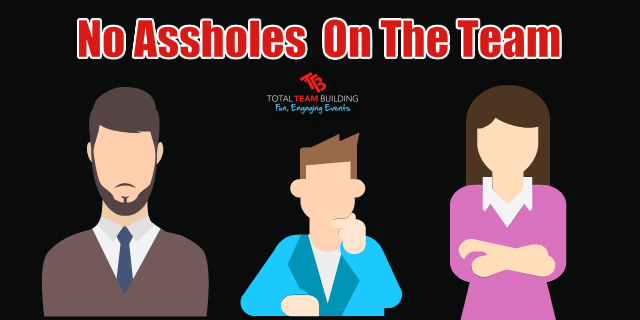
One of his philosophies that underpins the scorchers success and ethos of his team is the phrase “No assholes on the team”
“It is a reminder that we don’t want knobs in our organisation,” Langer explains.
Langer learned about this philosophy from Stanford Business School professor Bob Sutton’s book “The No Asshole Rule: Building a Civilized Workplace and Surviving One That Isn’t.”
Put simply demeaning people do terrible damage to others and to their companies. It is like cancer that will spread and destroy the culture of your team creating a toxic environment.
I recently spoke with Darren Demello of Perth’s 6PR radio station about the “No Asshole Rule” when it comes to building teams, poor leadership, character, and behavior. Click below to listen to the podcast.
Recommended Reading
How to Run an Effective Team Meeting
in Team/by Christine SmithIntroduction
Meetings are generally considered to be one of the worst parts of most people’s jobs, but have you ever asked yourself why? Even leaders tend to dread meetings, because this negative energy surrounding the word spreads like wildfire. But, there’s no good reason we should all hate meetings so much. In reality, meetings can be productive and useful. It’s all a matter of how you run them.
In today’s business environment, a traditional meeting that lasts for hours and bores everyone in the room is hardly an effective use of time. Time is one of your most valuable assets as an organization, and you’re going to need to use it more efficiently to accomplish real goals. Let’s talk about how you can do a better job at running your regular business meetings.
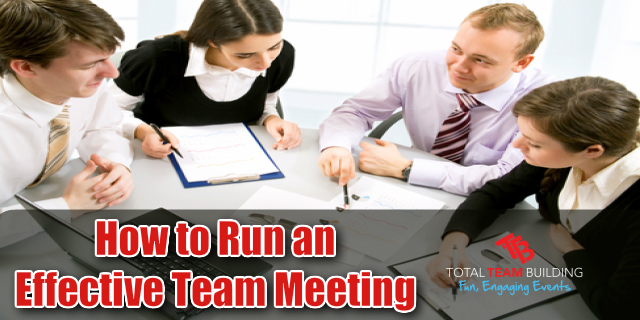
The Importance of Timeliness
Seeing as time is such an important asset, it’s vital that you use as little of it as possible. Studies done on your working memory capacity have shown that not everyone is able to pay attention equally. Some people have more control over their level of concentration and focus, while others are unable to focus as long in tasks that are uninteresting or unengaging.
This is why time is such a huge factor in the most successful meetings. Most adults are able to hold their attention span for up to 20 minutes, even if the topic they are paying attention to doesn’t interest them very much. If you hold a meeting that’s any longer than this, it will not be very successful. It is far better to have a short, productive meeting than a long, drawn-out and unproductive meeting.
Some occasions call for longer meetings and cannot be shortened. If this is the case, then you need to use your time more wisely. Inform people ahead of time how long the meeting will be, what the agenda is, and how they are expected to contribute. That way people will be more prepared and can be more engaged in the meeting itself, helping them to hold their attention spans for longer.
Record Your Progress
Keeping minutes in a meeting will make it so that anything you talked about won’t be lost or forgotten by the next time you get together. What’s the point of holding a weekly meeting if you end up talking about the same topics each time? Keeping minutes and logging what happened in a meeting will help you save time and make your meeting much more efficient for everyone.
Send out a copy of the minutes after the meeting is complete, so that anything important that was discussed will be remembered by all the attendees, and will be known by those who missed the meeting.
Avoid Monologue
If you’re doing a 10-minute status report on a daily or weekly basis, you can get away with just talking by yourself the whole time. However, if you want to make a meeting that will be longer than 10-20 minutes, you’ll want other people to be engaged and participating. You can either assign people tasks ahead of time to do at the meeting, or you can stimulate discussion and carry on during the meeting.
Although participation from others is important, you shouldn’t let someone else hijack your meeting. Remember to keep to the agenda and don’t waste people’s time. If someone is talking too much, isn’t making sense, or is just spending a long time getting to the point, you can take back the reins and stir the meeting back on course. It may be a good idea to talk to that employee afterwards and explain why you had to cut them off, to avoid hard feelings and help them to improve for the next meeting.
Be Purposeful and Direct
The last point is arguably the most important: don’t host unnecessary meetings. Before you call for a meeting, ask yourself if the information can be effectively communicated some other way. If it’s a simple status report or a general informative meeting, can you send out the information to people outside of a meeting?
If you decide that a meeting is necessary, you then have to think about who actually needs to be present for it to take place. Some meetings won’t require the entire team to be there, and you would be wasting time by requiring attendance from everyone. It’s better to selectively invite employees to meetings than to call everyone and have some employees waste time on something that will not involve them or affect them directly.
Meetings should be full of purpose and should be clearly directed. If you don’t have a good reason for why a meeting needs to happen, then maybe you don’t need to have a meeting at all!
Conclusion
Team meetings no longer have to be something to dread and drag your feet about. If you run meetings the right way, your team may not applaud you, but they will become more productive and will use their time for more valuable activities.
Unifying a Team of Diverse Members
in Culture Change, Team/by Darren BradyWe hear a lot about diversity, because of the ever-changing world around us. But, when you’re forced to face it and learn how to unite a team of highly diverse people, how do you do it?

Team Diversity is Helping Your Organization
First of all, it’s important to understand that diverse team members are actually a good thing for your organization. It might not always seem like it, but diversity can aid an organization in problem-solving, creative thinking, and productivity. These benefits can only happen if you can properly manage your diverse team of employees.
How can you manage a diverse team? There is no easy answer to this question and no solution that fits into all situations. However, there are a few great tips that can help you find the solutions to your what’s happening in your own team.
Cultivating Respect
Respect The Uniqueness Of People. Above all else, respect is necessary if you want to have a rightly functioning group of diverse people. Not only should you respect them all individually, but you have to create a culture of every team member respecting one another.
With diversity comes a plethora of viewpoints on every issue, a variety of lifestyles, and a lot of different cultural differences. This is difficult to navigate at times, but if you train your employees to always act with respect for one another, and if you also embrace that principle, then you can manage to work together more peacefully.
Only when you appreciate that everyone is unique can you begin to accept people as they are. Respect their uniqueness. Support them in their individual learning and developmental process. Be grateful for having attained this level of awareness. Developing your awareness is a life-long personal challenge on the path toward perfection.
Clear Expectations
Acknowledge to your team that you are made up of a lot of diverse people, and make sure they understand that this was intentional. It’s important that each member knows that they belong on the team and that it wasn’t an accident that brought them there. Show each member why they are important to the team and what you expect from them.
Your entire team should understand your expectations for them as a team, and as individuals. It is much easier to unify people once they have something to work towards!
Inclusive Decision-Making
You are only one person with one way of thinking. If you want a truly diverse team to last, you’ll need to make sure they can be involved in the decision-making process in a meaningful way. Don’t exclude your team from important decisions that need to be made. Ultimately, you are the final authority and the one who makes the call. BUT, you should involve your team in the process of deciding what that call will be and how you as a team will proceed towards your goals.
Teams that make decisions together are more likely to be able to stick to those decisions and create fantastic results. If your members feel like they are not involved in the process, or worse that only a few people were involved and not the entire team, you may lose your unity very quickly.
Be Flexible to Change
Leaders often make the mistake of assuming everyone will respond the same way to their leadership style. This simply isn’t true, and many leaders create problems when they act on this assumption. Don’t be one of those leaders!
Instead, be willing to adapt your leadership style to each team member, according to what will work best with them. Your goal isn’t to make friends and keep everyone as happy as possible, but if you can manage to do that along the way by switching up how you do things, why wouldn’t you? People from diverse backgrounds won’t always respond the same way to your leadership, and that’s okay. Be willing to change up how you do things in order to help make every employee as productive as possible.
Teach Healthy Conflict
Where diversity exists, conflict always follows. It’s natural, and not always unhealthy if it’s done in a productive environment. Plan times of structured conflict where employees are able to discuss their own diverse ideas and thoughts without criticism, just healthy and useful conversations. Make sure to mediate these discussions closely and keep employees from ruining the atmosphere with negative comments or personal attacks.

Infographic courtesy of 4imprint based on the Diversity in the Workplace Blue Paper
Conclusion
Managing a diverse team is not going to be easy, but the benefits are clearly there if you can be successful. Use these tips to help guide you towards a healthy team full of diverse thoughts and different ideas.
What is the Ideal Team Size for a Working Team?
in Team/by Darren BradyIn many organisations worldwide the question of team size comes up any time a new team needs to be formed or an existing team is being evaluated. While this isn’t the only factor that affects how a team will behave, nor is it the most important in the majority of cases, it is an undeniably relevant question that demands a logical answer.
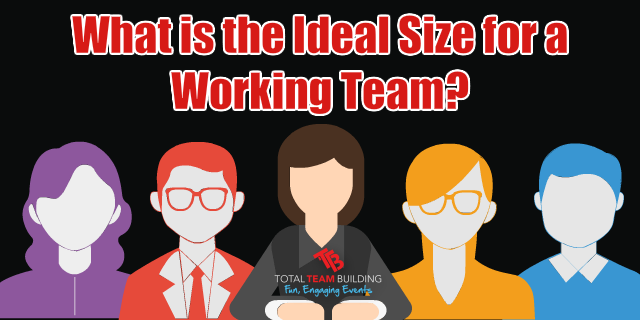
Why Team Size Matters
Teams of different sizes behave in vastly different ways. If you don’t manage to strike the balance properly with regards to the size of your team you might end up with a lot of preventable problems. Those teams that are too small risk having a skills gap in an important area while teams that are too large risk a loss of productivity and cohesiveness.
While it’s true that each team and each company is in a unique position with its own employees, there are some standards that have been proven true throughout a wide range of companies in hundreds of studies done around the world. When it comes to teams, size matters. There is no set number that everyone agrees is the best, because it can be different depending on a few variables, but it is certainly something to take into account when you want to form a working team.
Theories About Team Size Versus Productivity
Productivity is one of the main reasons teams are formed. Some company tasks can only be completed well when a team is working on them versus an individual trying to accomplish the same task. However, if a team is too large there is a huge risk of productivity of each individual worker going down as the size of the team goes up. This is referred to as social loafing and is illustrated beautifully by the Ringelmann effect.
The Ringelmann effect refers to some of the earliest research ever done about team size. Through an experimental process involving increasingly large groups of people pulling a rope, Ringelmann deduced that for every person added beyond 5-6 people, individual contributions to the group became smaller. Essentially this means that although larger groups might have higher rates of overall productivity than smaller teams, the individual members of the larger team have lower rates of productivity than those in the smaller team.
This theory is commonly referred to as social loafing. When efforts are being expended by more people, the team as a whole is more likely to experience a decrease in individual work efforts. Some employees may start to slack off, knowing that their lack of effort will be compensated for by the other working members of the team. Others just simply won’t work as hard as they otherwise would because it is more difficult for them to see the effects of their contributions to the team. Altogether this leads to increased overall output and decreased individual output, a scenario that doesn’t suit your company well.
How To Determine The Best Size For Your Team
So, how can you avoid the Ringelmann effect in your organisation? How can you know the ideal size for your particular team? These are questions that have been asked by millions of companies around the world. Unfortunately, there is not one answer that applies to all companies, as the size of the team is completely relative to the task that must be performed by the team.
Team size depends mostly on these three variables:
1. What is the team trying to accomplish?
Different organisations have their own needs. For example, a team of painters can never really be too large as the building will get painted more quickly with a larger team than a smaller team. However, a corporate team of auditors will not experience the same effect and might see more negative results from having a team that’s too large.
2. How many specific and separate roles are necessary to complete the team goals?
What is the absolute number of unique roles you need for your team to succeed? You have to ensure that the team will not have any skills gaps, as this may prevent success and cause frustration. But, you also want to avoid having too many people with similar job skills and roles on the same team as they will begin to lose motivation and productivity.
3. Is there a deadline set for work completion?
Work that needs to be done quickly can sometimes call for a larger team with more working power to accomplish all the necessary tasks on time. This is especially true if no creativity is required for completion of the tasks. Longer-term projects can benefit from smaller teams that will experience more cohesion and positive discussions about the work.
The Widely Accepted Answer
According to Katherine Klein from Wharton University, the widely accepted ideal size for a working team is five people. If you go beyond five people the team starts to lose individual performance, while teams smaller than 5 people can experience awkward team dynamics and skills gaps.
Klein’s research matches that done by other researchers around the world who have also tried to answer this question. The second most common answer to the question of ideal working team size is six people, as the dynamics of even versus odd numbered teams can cause some differences in opinion.
Forming Your Ideal Team
At the end of the day, you have to look at the needs of your organisation and the reasons behind team formation. Why do you need a working team formed, and how many people will be required to best fulfill the requirements placed on your team?
Don’t stress as much over the size of the team as you do about more important factors of team success, such as the ability to work well together, filling all the necessary roles, and diversifying the team. Total Team Building
If you have a new team or are looking to build a better functioning team then contact Total Team Building. We have a range of team building activities that can help team members get to know each other and work together more effectively.
Qualities of a Good Team Player Versus a Bad Team Player
in Culture Change, Team/by Darren BradyTeamwork is very present in business today. As a result, many HR departments and hiring managers are looking for those who are going to work well within teams to achieve their goals. Being good at working with a team, sometimes referred to as being a “good team player”, can come in handy for advancing your career and doing better in your workplace.
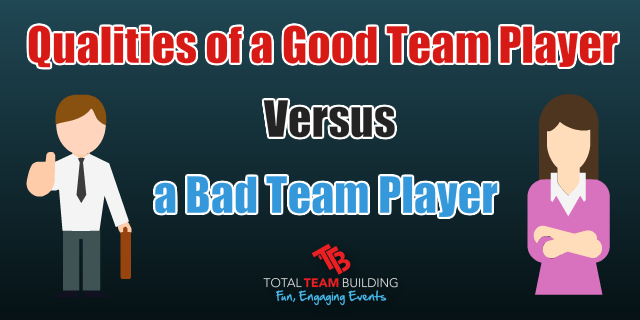
What Makes Someone a Good Team Player?
Those who are good at working in a team don’t necessarily act or work the same way, but what they do have in common is that you can count on them to benefit the team rather than breaking it apart. Not all employees are good at being in teams. There is a certain set of qualities you can look for in a good team player versus a bad team player.
Misconceptions About Team Relations
Hearing the phrase “good team player” makes it sound as though the person you’re referring to goes along with the flow of the team and does their work without questioning anything. This, however, is not the ideal way for a team member to act and would actually make them a poor team player.
Keeping the peace in a team is useful, but controversy can actually bring about a lot of good solutions to problems and add new points of view to a conversation. The definition of a good team player is not someone who is overly compliant and unquestioning of the leadership, but someone who pulls their own weight, contributes positively to the team, and works hard to achieve the goals of the team.
Qualities of a Good Team Member
These are the qualities that a good team player should possess:
- Reliability
Team members rely on each other heavily to get work accomplished and reach milestones and goals. Good team members must be reliable. Without reliability it doesn’t matter how good of work you do.
- Understanding of Strengths and Weaknesses
If you want to contribute as much as possible to the team, you need to know what you have to offer and what it is that you’re bad at. This will allow you to work more in the areas of your strength and add value to the team while letting others help you fill in your weaker spots.
- Good Communication Skills
Communication within a team is needed on any project. A good team player is able to share information and resources with other team members and communicate whatever is necessary.
- Flexibility
Teams cannot always make exceptions and work around your needs. You have to be flexible to accommodate the needs of the team and to work well with others.
- Willingness to Compromise
Recognizing that your point of view and your ideas are not always going to be embraced is important. It’s a good skill to learn how to compromise. However, that doesn’t mean you should let others walk on top of you and dismiss your ideas.
- Listening
Learning to listen to your teammates can help you to understand everything that’s going on within the team and what needs to happen. Knowing where others stand on issues is important before you can give an informed opinion or idea.
- Commitment to Team Goals
The primary goal of a team is to accomplish some goal or purpose. In order to be a good team player, you have to be committed to that goal and keep it in focus.
- Problem Solving
Anyone can point out problems. However, those who not only point out problems but also offer a solution are much more valuable to any team.
- Support Team Members
Sometimes your team members will have more success than you or will need help from you. In either case you should be a supportive team member in order to be of most use to your team.

Other Opinions About Teamwork and Team Dynamics
Some professionals have a differing opinion. In the opinion of others, team players are not useful and businesses should look more for those who can do the job on their own if necessary. By finding those capable of doing the job themselves, you’re more likely to have a stronger team.
This is a different way of thinking about teams, and while it’s not the best way to arrange a team there may be some merit in this thought.
Conclusion
Teams need people that work well together to accomplish a unified goal. Without this, a team will fail. Whatever you believe makes someone a useful part of a team, the qualities listed above will always help you to succeed in teams.
Team Building helps build working relationships and better team players?
Total Team Building specialise in teams…we facilitate a range of team building activities that help build team morale, trust, leadership & communication within a team. For more information about how Total Team Building can help you contact us today.
